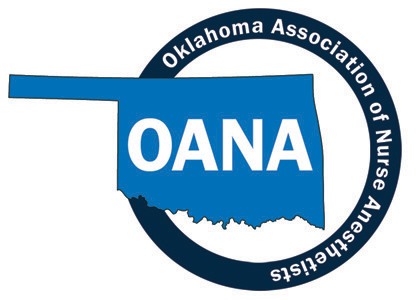Conference Full Schedule
This program has been prior approved by AANA for 12.50 Class A CE Credits; 6 CE Credits of pharmacology/therapeutics.
Friday, August 18, 2017
6:00-8:00 p.m. Board Meeting
Saturday, August 19, 2017
7:00-7:45 a.m. Registration and Breakfast
7:45-8:00 a.m. Opening Statements - President Brenda Toland
8:00-9:00 a.m. Opening Session

What Can the CRNA Do to Improve Medication Safety and Reduce Errors?
Speaker: Bernadette Henrichs, Ph.D., CRNA, CCRN
Key Objectives of this Session:
*The learner will be able to describe medication errors that can occur in the anesthetic setting.
*The learner will be able to list ways to decrease errors in the anesthetized patient
9:00-10:00 a.m. General Session

The Use of Dexmedetomidine in the Surgical Patient
Speaker: Bernadette Henrichs, Ph.D., CRNA, CCRN
Key Objectives of this Session:
*The learner will be able to describe how Dexmedetomidine may be used in patients having general anesthesia or MAC anesthesia.
*The learner will be able to explain the advantages of using Dexmedetomidine when given for sedation and analgesia.
10:00-10:15 a.m. Break with Exhibitors
10:15-11:15 a.m. General Session

Non-Opioid and Non-Anesthetic Gas Technique
Speaker: Garry Brydges, DNP, MBA, ACNP-BC, CRNA
Key Objectives of this Session:
*The learner will be able to define the central elements of enhanced recovery after surgery (ERAS).
*The learner will be able to evaluate the role of the nurse anesthetist in ERAS.
*The learner will be able to describe the pharmacology behind the anesthesia techniques.
*The learner will be able to describe pharacological approaches to ERAs and anesthesia delivery.
11:15 a.m-12:15 p.m. General Session

12 Lead ECG: Advanced
Speaker: Garry Brydges, DNP, MBA, ACNP-BC, CRNA
The 12 lead ECG can be used to interpret many unusual pathologies. These tend to be slightly more advanced skills in interpreting 12 lead ECG's. A Basic understanding and targeted areas on the 12 lead ECG are beneficial to the clinician when identifying uncommon and unique pathologies commonly found on 12 ECG tracings.
Key Objectives of this Session:
*The learner will be able to identify Brugada syndrome.
*The learner will be able to identify Pulmonary Embolus
*The learner will be able to identify uncommon pathologies by 12-lead.
12:15-12:45 p.m. Lunch with Members and Exhibitors and OANA Member Meeting
12:45-1:45 p.m. General Session

AANA Update: The Value of Membership
Speaker: Bruce Weiner, MS CRNA
Key Objectives of Session:
*The learner will be able to describe trends in AANA membership demographics, education, employment, and public relations
*The learner will be able to discuss current nurse anesthesia legislative initiatives and strategies, as well as issues affecting practice.
*The learner will be able to discuss initiatives regarding CRNA Wellness, PAC, and research.
1:45-2:45 p.m. General Session

Enhanced Recovery: Changing How We Do Things
Speaker: Bruce Weiner, MS CRNA
Key Objectives of this Session:
*Describe the direct effect surgical stress has on the rate of complications, length of stay and cost of care.
*Identify what key factors contribute to the concept of Enhanced Recovery After Surgery (ERAS).
*Define Goal Directed Fluid Therapy and its effect on patient outcome.
*Understand how ERAs plays an important role in healthcare delivery today.
2:45-3:00 p.m. Break with Exhibitors
3:00-4:00 p.m. General Session

Anesthesiologists Assistants
Speaker: Garry Brydges, DNP, MBA, ACNP-BC, CRNA
As we move forward into new models of healthcare delivery, market competition among anesthesia providers continues to grow. The dynamics among nurse anesthetists, anesthesiologists, and anesthiologists assistants ensue with tremendous political debate. Increasing the nurse anesthetist's awareness politically and within the workplace is imperative to ensure a thorough understanding of impact within the workplace.
Key Objectives to this Session:
*The learner will be able to describe a brief historical overview of AAs in the US.
*The learner will be able to describe current events related to ASA support and perspective on AAs.
*The learner will be able to describe strategies at the State Capitol regarding AAs.
4:00-5:00 p.m. General Session

Cardiomyopathy: Understanding the Clinical Concerns
Speaker: Garry Brydges, DNP, MBA, ACNP-BC, CRNA
Cardiomyopathies occur in different forms. These cardiac conditions challenge some anesthesia regiments. Careful consideration of the disease process enable the nurse anesthetists to optimize the anesthetic regimen for this fragile patient population.
Key Objectives to this Session:
*The learner will be able to identify dilated cardiomyopathy.
*The learner will be able to identify restrictive cardiomyopathy.
*The learner will be able to identify hypertrophic cardiomyopathy.
*The learner will be able to identify right ventricular cardiomyopathy.
5:00 p.m. Happy Hour with Exhibitors
Sunday, August 20, 2017
7:00-8:00 a.m. Breakfast for Attendees
8:00-9:00 a.m. General Session

Why Participating in Legislative and Regulatory Relations is Important
Speaker: Bruce Weiner, MS CRNA
Key objectives for this session:
*Summarize why nurse anesthetist involvement in legislative and regulatory relations is important.
*Discuss the importance of developing relationships with key state policy makers
*Understand the importance of delivering your advocacy message
*Understand the advantages and disadvantages of using a lobbyist
9:00-10:00 a.m. General Session

Effect of Low Dose Lidocaine Infusions on Postoperative Analgesic Requirements
Speaker: Joe Pellegrini, CRNA, Ph.D.
A review of some of the most recent research that have used lidocaine infusions as an adjunct to general anesthesia and the impact that these infusions have had on introperative and postoperative morbidity and analgesic requirements. A comparison between epidural and other adjuncts will be discussed to determine the best practice model to use to prevent post abdominal procedure complications.
Key objectives for this session:
*Discuss the most common recipes highlighted in the research regarding the use of low-dose lidocaine infusions and the impact they have on the intraoperative and postoperative course.
*Discuss what impact a low-dose lidocaine infusion has on intraoperative and postoperative analgesic requirements
*Review a cost-base analysis of using lidocaine infusion adjuncts as a standard of care in patients who have received an abdominal surgical intervention
10:00-10:20 a.m. Break with Exhibitors
10:20-11:20 a.m. General Session

Pitocin Use Following Cesarean Section
Speaker: Joe Pellegrini, CRNA, Ph.D.
Review the most common surgical procedures performed on the pregnant patient requiring non-obstetric surgery and what impact anesthetic medications have on fetal development and maternal outcomes.
Key objectives for this session:
*Following this discussion each participant will have an understanding regarding the use of oxytocic medication regimens in labor and delivery
*The participant will be able to describe the impact oxytocin has on maternal and fetal hemodynamics to include morbidity and mortalities ratios
*Following this discussion each participant will have an understanding of the side effect profiles of pitocin.
*Following this discussion each participant will have an understanding of the new oxytocic agent carbetocin.
11:20 a.m.-12:20 p.m. General Session

VTE Prophylaxis: What's New on the Horizon
Speaker: Joe Pellegrini, CRNA, Ph.D.
This presentation will review all of the latest guidelines regarding VTE prophylaxis and regional anesthesia to include the Maternal safety bundle on VTE as well as the newly formulated international VTE prophylaxis guidelines from the SOAP task force.
Key objectives for this session:
*Following this discussion each participant will have an understanding regarding mechanism of venous thromboembolism and the risk factor based protocols used in obstetrics.
*The participant will be able to describe 4 distinct domains outlined in the national partnership for maternal safety consensus bundle on VTE.
*Following this discussion each participant will have an understanding of the current guidelines used in practice regarding neuraxial anesthesia and VTE prophylaxis as well the new proposed global guidelines recently developed by SOAP.
12:20 p.m. Adjournment
Questions about our conference? Please contact our Association Manager at [email protected].
|




